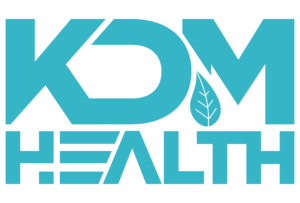C For Yourself
Imagine a nutrient abundantly available, cheap, safe and effective. So broad it can work for you as an:
Antioxidant
Anti-inflammatory
Antidepressant
Antihistamine
Antiviral
Antitoxin
Antibiotic

The pharmacological effects of this nutrient at high concentration (and this is key) are astonishing.
You’d imagine this nutrient would be heavily promoted by the medical industry and pharmaceutical industries globally (because they want you to be healthy, right?) and all the amazing findings dating back 80+ years would be openly shared and taught with no bias in mainstream medical, health and nutrition education…
Amazingly Ascorbic Acid, more commonly known as Vitamin C is all of these things when used appropriately.
What’s appropriate?
It’s entirely dependent on the dose, duration and frequency of use.
Because it’s a ‘water soluble’ vitamin it’s best taken frequently through the day, the same as sipping water throughout the day. Once or twice a day minimum frequency wise. Plus (hopefully) the foods we ingest have some Vitamin C because humans cannot synthesis it. We must obtain Vitamin C from our diet and/or supplementation.
How do you know how much to use?
Easy. Take as much as you want, but only up to the point without having loose bowel movements. If you reach that point, back it off a little. Everyone’s different. That said hitting what’s referred to as ‘bowel tolerance’ occasionally probably isn’t a bad idea either according to Dr Thomas E Levy, in his book ‘Optimal Nutrition for Optimal Health’.
For the more technically minded, this from Dr Rhonda Patrick might help: “If a person eats between five and nine servings of vitamin C rich fruits and vegetables a day, their steady state plasma vitamin C concentrations will be around 80 micromolar or less. From pharmacokinetic studies, we know 200mg of oral vitamin C products plasma level of about 90 micromolar. Not much of an increase over the baseline levels. A single 1.25 gram oral dose will produce plasma vitamin C levels of 187 micormolar, which is a bit more significant. With both amounts, plasma concentration returned to baseline values after 24 hours.
A 3 gram oral vitamin C dose raised plasma levels to 220 micromolar. A level much higher than steady state levels. When that 3 gram dose was taken every four hours, the plasma concentration of 220 micromolar was maintained throughout the 24 hours.”
Interestingly Dr Linus Pauling (he also won two unshared Nobel Prizes) went as far to say every medicine should come with a label saying: “WARNING – Keep this medicine out of reach of everyone. Use Vitamin C instead”.
While I’m not sure he was being literal, I am sure of the message he was attempting to impart.
Andrew W Saul (of ‘That Vitamin Movie’ and Editor of the peer reviewed Orthomolecular New Service) has a fantastic saying: “take enough C to be symptom free, whatever the dose may be”.
Personally, I use a minimum of 3 grams/day of Vitamin C and have done for close to 20 years. I’ve gone as high as 20+grams/day periodically. Plus I’ve experienced intravenous vitamin C of 30+grams (combined with other vitamins and minerals) at various times. All of my immediate family are in this ballpark too.
Interestingly, one of my earliest childhood memories is my Nona (Italian/Croatian for grandmother) giving me chewable Vitamin C in the early 1980’s and then my brother and I sneaking into her room to chew on more of them, they tasted so good! Looking back, she was way ahead of her time nutritionally, ordering different antioxidants from Europe sent to Australia back in the 1970’s. She lived well into her 90’s.
We live in a world where many of our diseases are diseases of abundance. Cheap, safe and effective micro-nutrients can be incredible for our long term health and wellbeing. Interestingly they sometimes get a bad wrap because they cannot be patented (a patent is intellectual property giving the owner legal right to exclude others from making, using or selling the product. Only the owner of the patent can.)
Meaning the majority of funding for research goes to experimental drugs that can be patented. Investors who put up the capital for the research can eventually expect a positive return on their investment selling a ‘scarce proprietary’ product.
This dilemma has a simple solution.
Try it yourself too experience how you feel and function.
